Highlights of a day trip to Córdoba (Spain)
Córdoba, along with Seville and Granada, should be on every visitor’s Andalusian itinerary. The primary reason to visit is the Mezquita de Cordoba (Cordoba Mosque). It is not only one of the top 3 Moorish sites in Spain, it is among the most impressive religious buildings anywhere in the world (it’s at the top of our list – and we’ve seen St. Peter’s Basilica, Hagia Sofia and Angkor Wat among others…).
So the Mezquita should be your primary reason to visit Córdoba. But there’s more to Córdoba, more than enough to fill up a day*.
*You should ideally stay one night and take the time to enjoy Córdoba. Stay at Hospes Palacio del Bailio or H10 Palacio Colomera for a special experience. But many visitors visit Córdoba on a day trip from nearby Seville so this post focuses on seeing the best of Córdoba on a limited schedule.
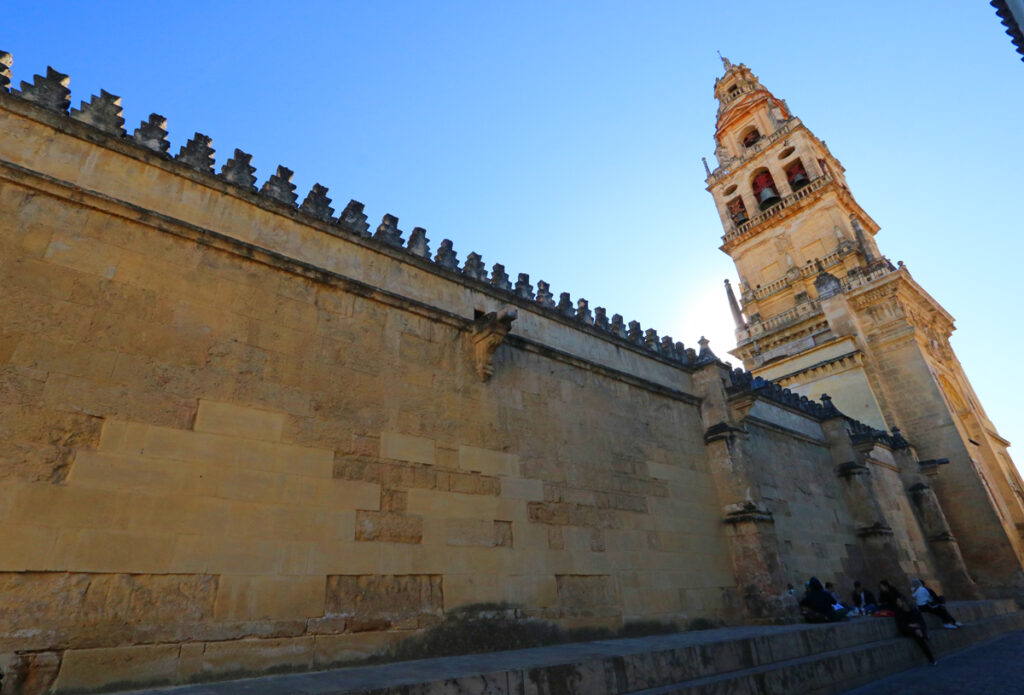
What to See in Córdoba
1. The Mezquita
The Mezquita has a history of being both a mosque and a catholic church. Visiting it today you’ll see two very different (but both very stunning) religious sites sharing one space. This co-mingling of history has created controversy. The name for example: the “Mezquita” is commonly known as the Mezquita de Cordoba (Cordoba Mosque). It is also Cordoba Cathedral or the “Cathedral of Our Lady of the Assumption” (its current owners are the Catholic church). It is also called the “Cordoba Mosque Cathedral” (a name meant to keep everyone happy) after a dispute between the church and the city over the name a few years ago.
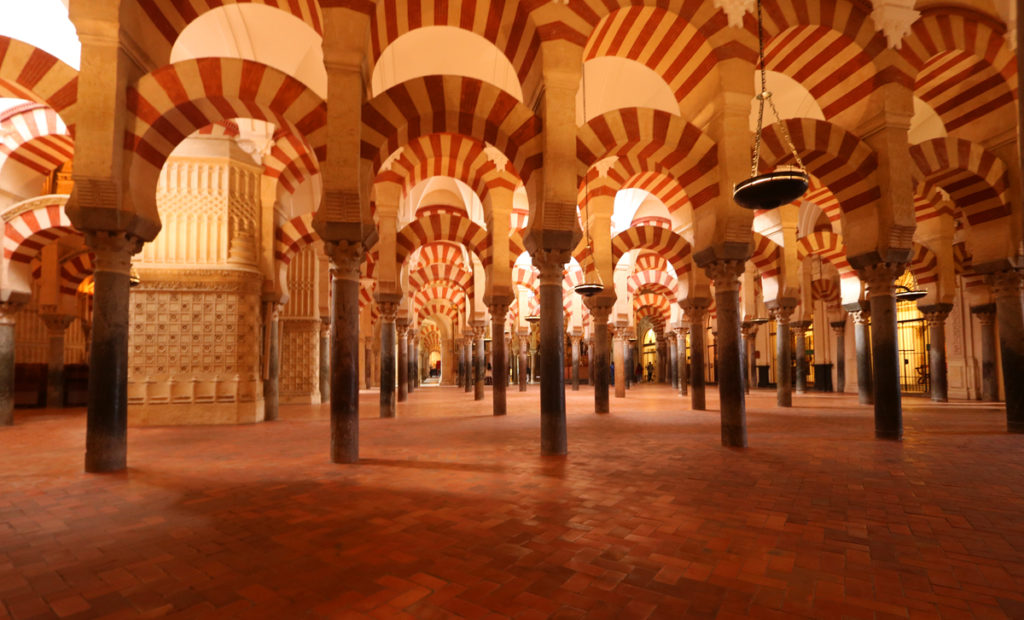

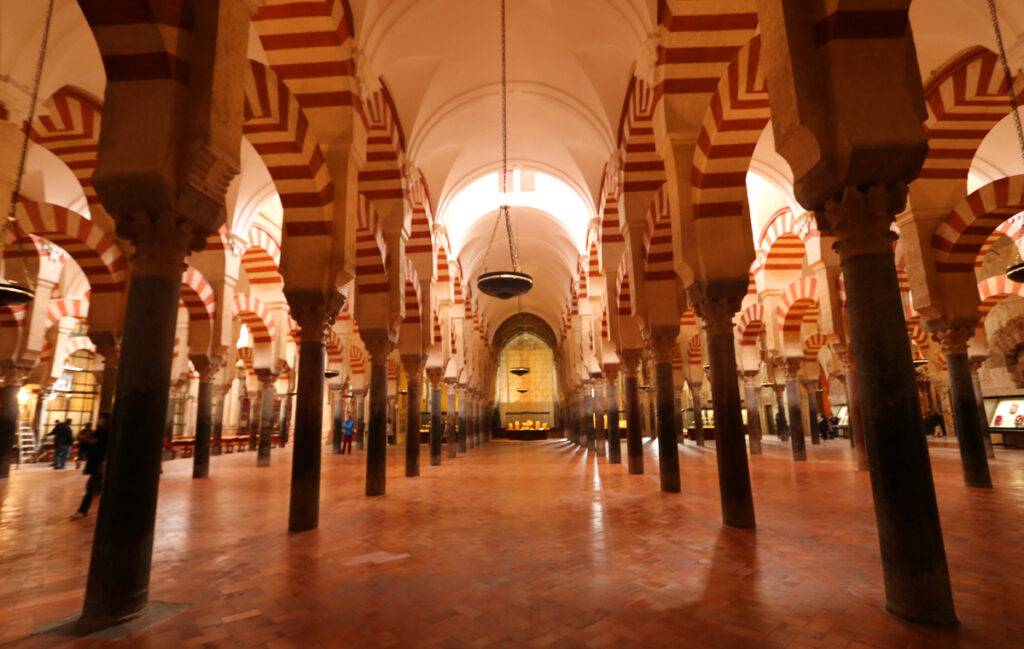
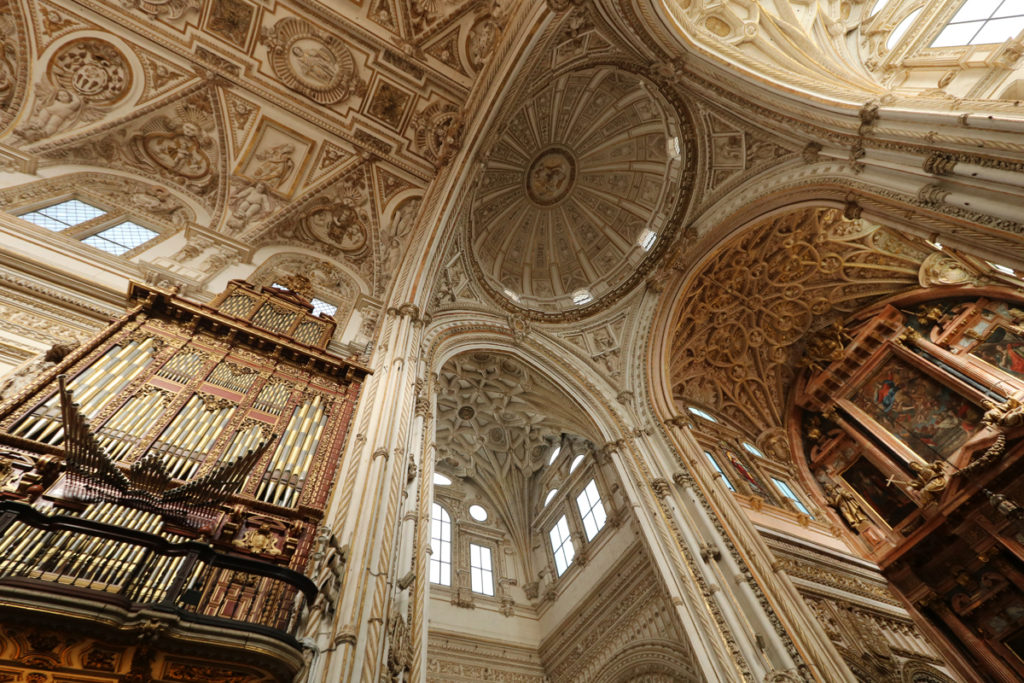
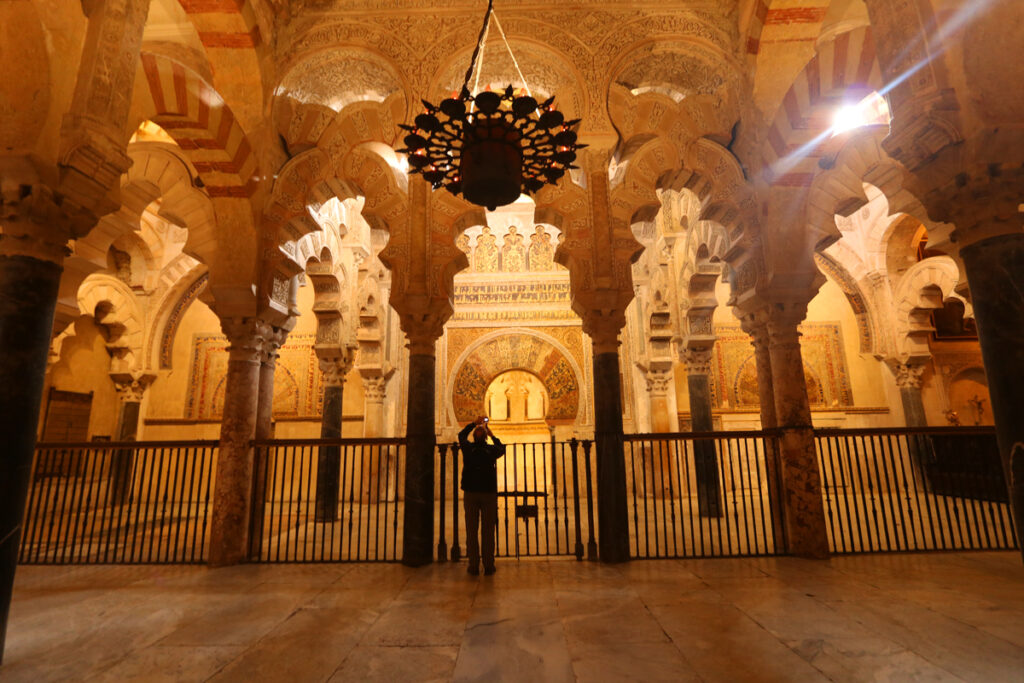
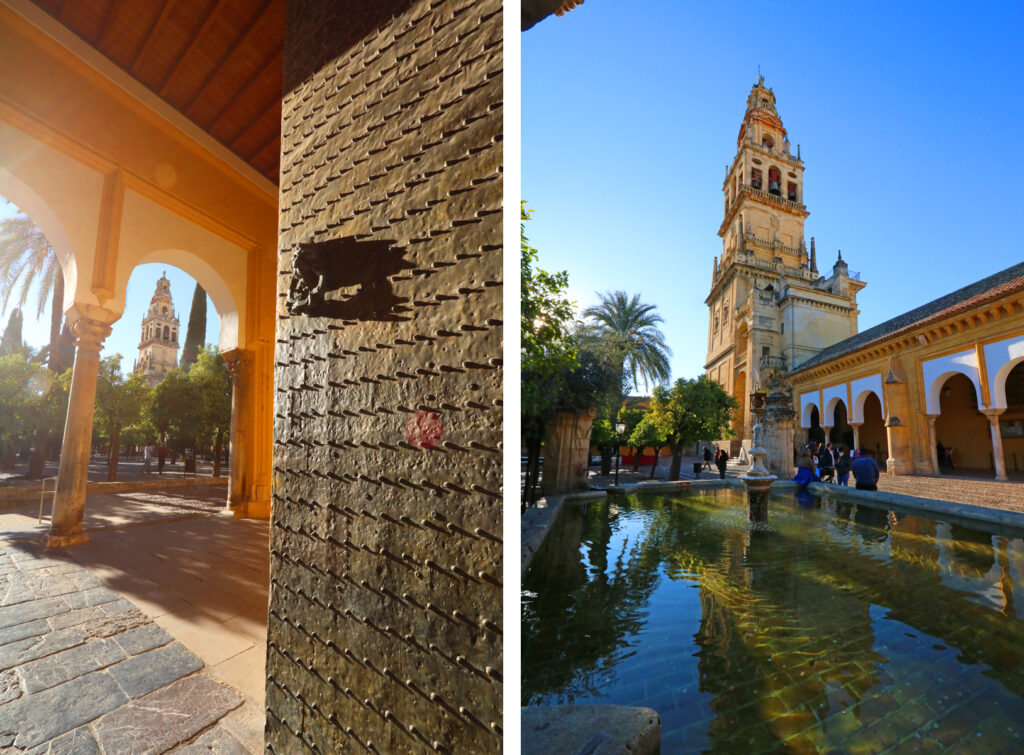
The Mezquita is a UNESCO World Heritage Site and is also one of Spain’s most incredible historical monuments.
More: Cordoba’s Incredible Mezquita
Note: Free entry from 8:30 – 9:30 am Monday to Saturday.
You should plan on a few hours to explore the Mezquita. You should also buy a separate ticket to climb the bell tower. You can buy both on the Mezquita’s official website.
2. Alcázar of Córdoba
This fortress and palace were built in 1328, almost 100 years after the Spanish reconquest of Córdoba. It was the home of the Catholic Monarchs Isabella and Ferdinand, was the headquarter of the Inquisition in 1482 (the Alcázar’s main tower is known as the “Tower of the Inquisition”) as well as the base from which Isabella and Ferdinand commandeered the takeover of Granada in 1492 (the last Moorish stronghold in Spain). Later that same year, Christopher Columbus came to the Alcázar to meet with the Monarchs when planning his first trip to the Americas.
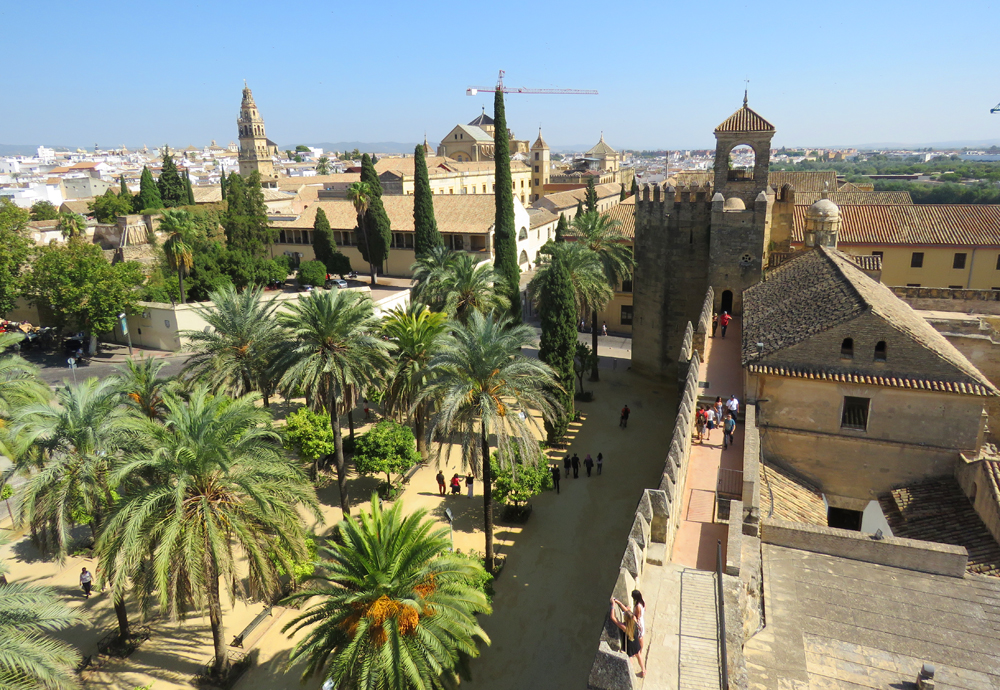
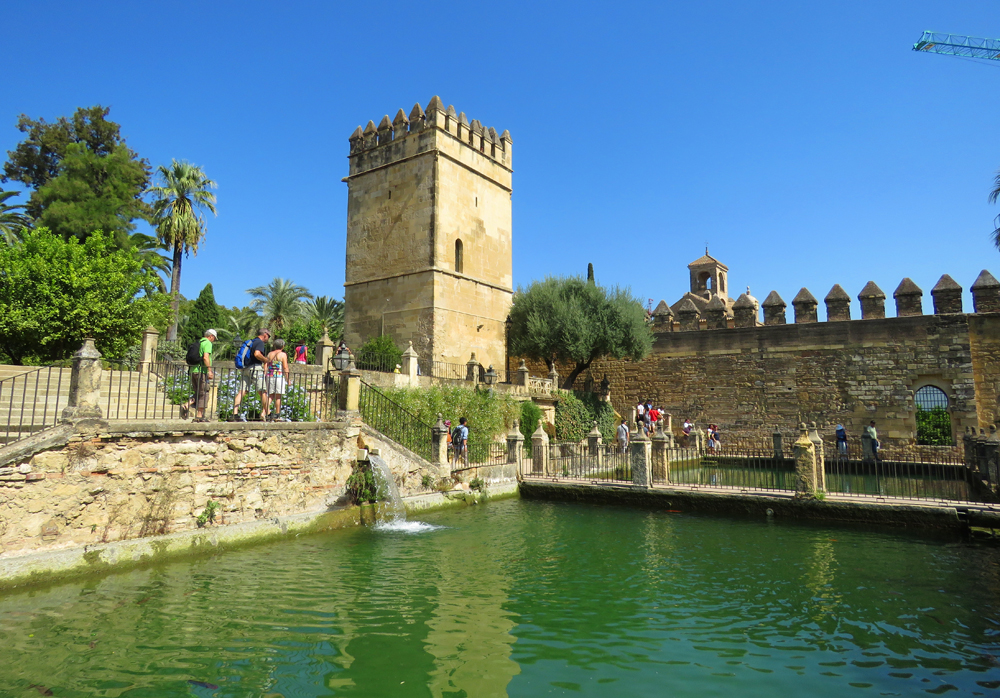

Today you can walk around the walls of the Alcázar, climb the towers for great views of Córdoba, and explore the beautiful Moorish gardens which feature pools and decorative fountains. The palace contains an antiquities collection including fine Roman mosaics in the Hall of the Mosaics.
3. Roman Bridge
The Roman Bridge (Puente Romano) is a 16-arched bridge, which spans the Río Guadalquivir. The bridge was originally built after Caesar’s victory over Pompey the Great in 48 BC (the battle was fought in Greece). The bridge you see today (built by the Moors) was constructed on the foundations of the Roman bridge.
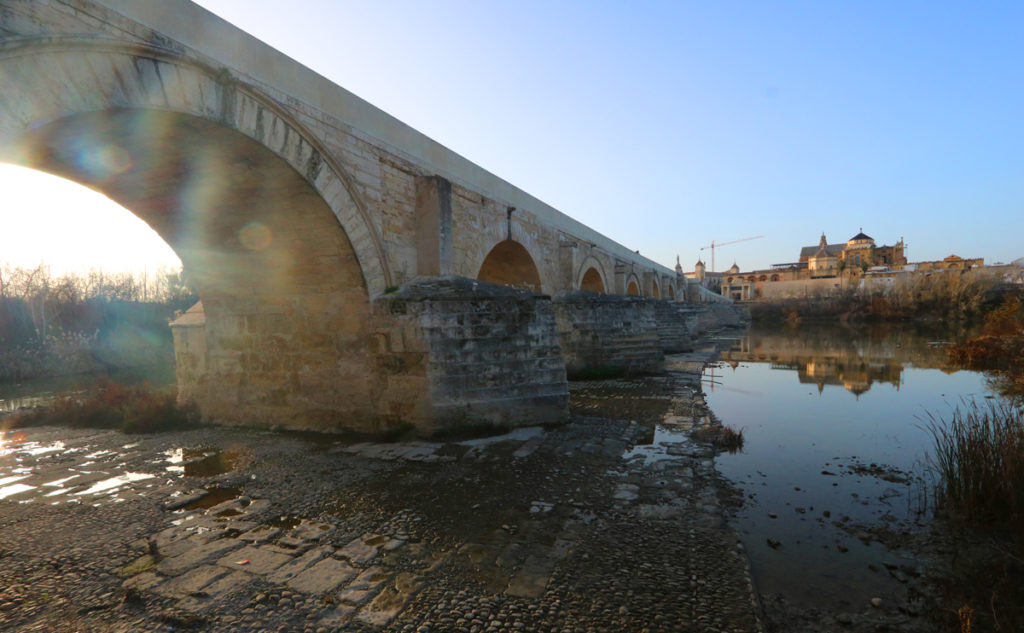
A bit of History: The Romans founded Córdoba in 152 BC. They chose this spot because it was the furthest point that they could navigate up the Guadalquivir river. The location became extremely important for exporting olive oil, wine and other goods back to Rome.
At one end of the bridge is the Torre de la Calahorra, a 12th-century gate tower which was functioned as part of the city’s medieval fortifications. When the Spanish reconquered Córdoba in 1236, the gate was a major obstacle for Catholic king Fernando III and his forces in entering the city. Today the tower has a museum, the Museo Vivo de Al-Andalus, which displays the once harmonious relationship between Christians, Jews and Muslims in Córdoba.

4. Juderia
Córdoba has a very pretty old town centered on the Juderia (old Jewish quarter) which surrounds the highlights detailed above. It’s a network of pretty winding streets and squares and typical Moorish whitewashed buildings. They’re a pleasure to walk around and you’ll have different views of the bell tower of the Mezquita and its walls.
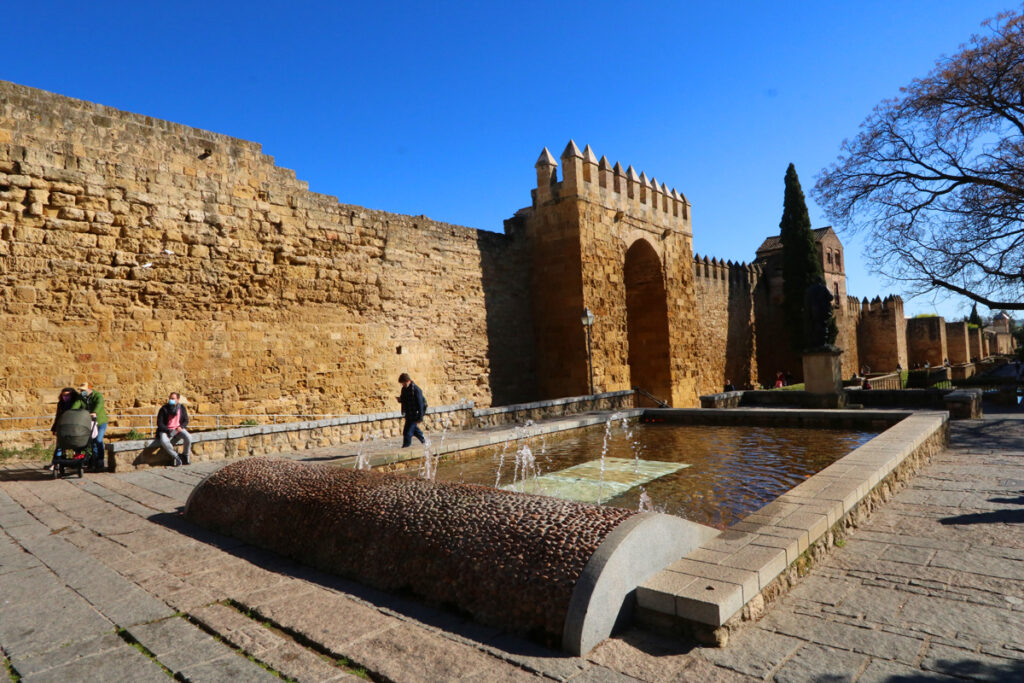

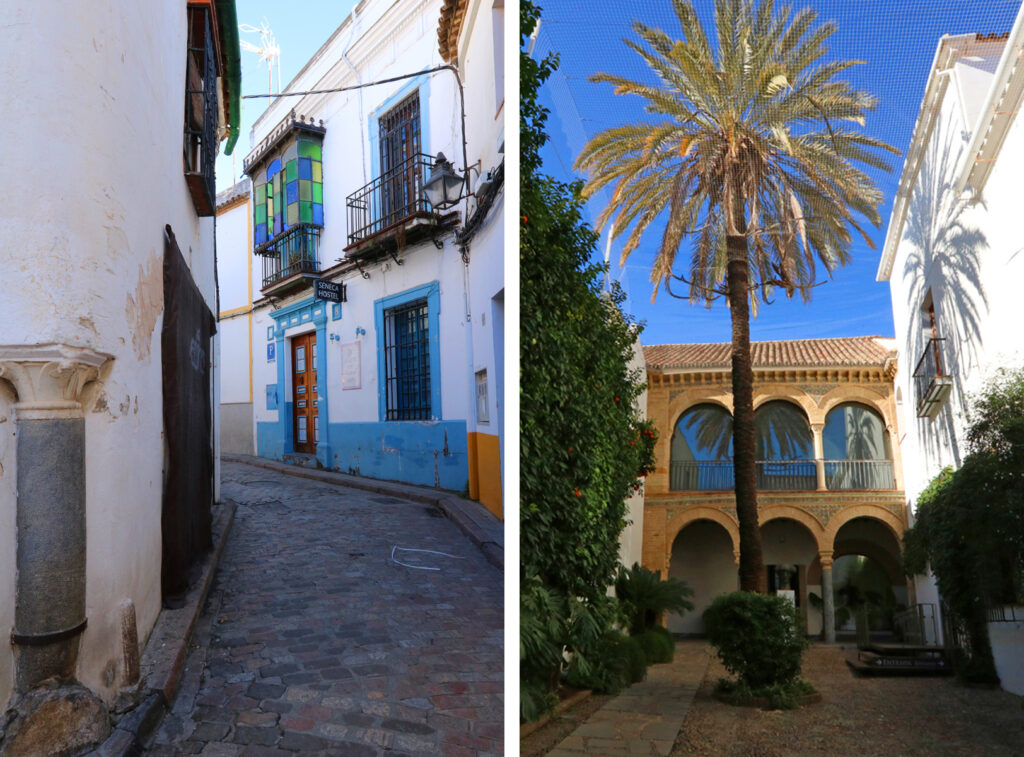
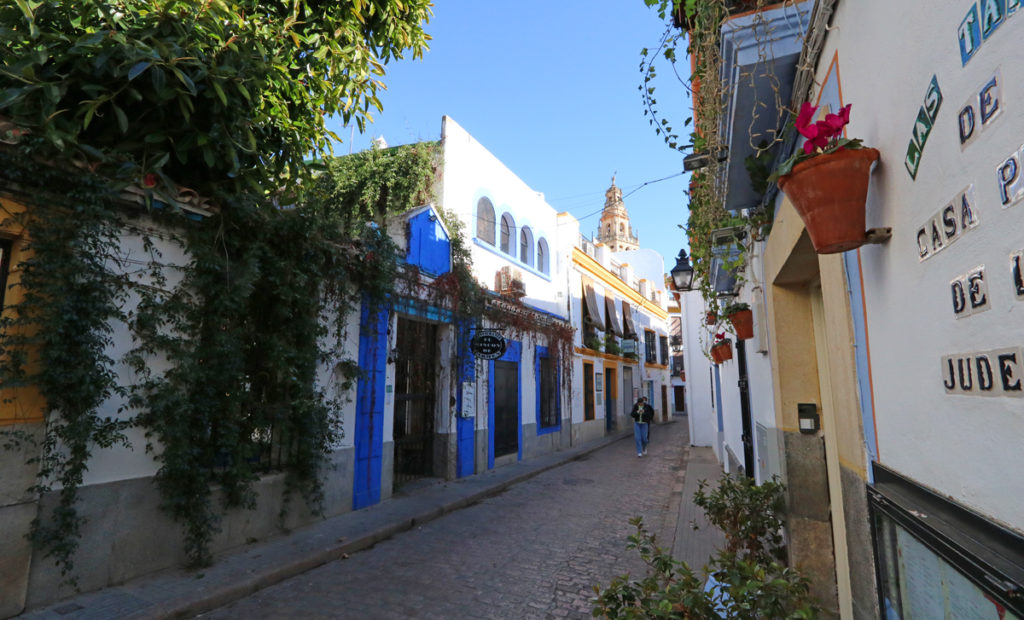
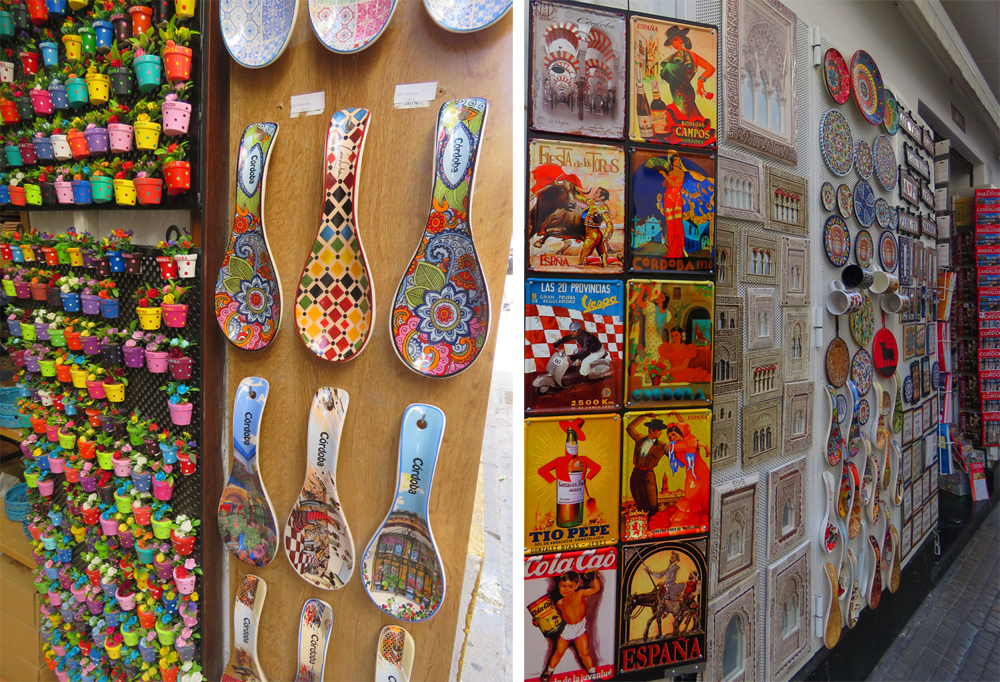

5. Palacio de Viana
A little out of the center is this 15th century palace. It was built in typical Mudejar style (Mudéjar is an architectural style that commingles both Moorish and Spanish Christian elements). The Palace is somewhat similar to Seville’s Palacio de las Dueñas with its courtyards and Spanish paintings and furniture. But what really stands out at Palacio de Viana are the outdoor spaces. You’ll find 12 patios with decorative fountains and gardens. In it are palm trees, orange trees, colourful bougainvillea, jasmine…
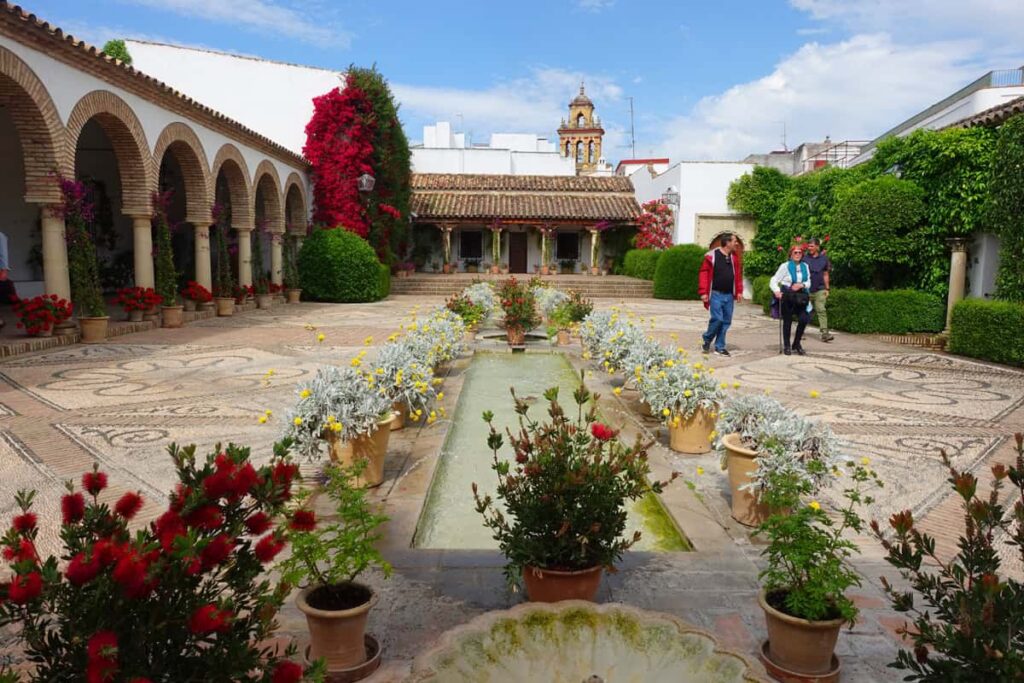
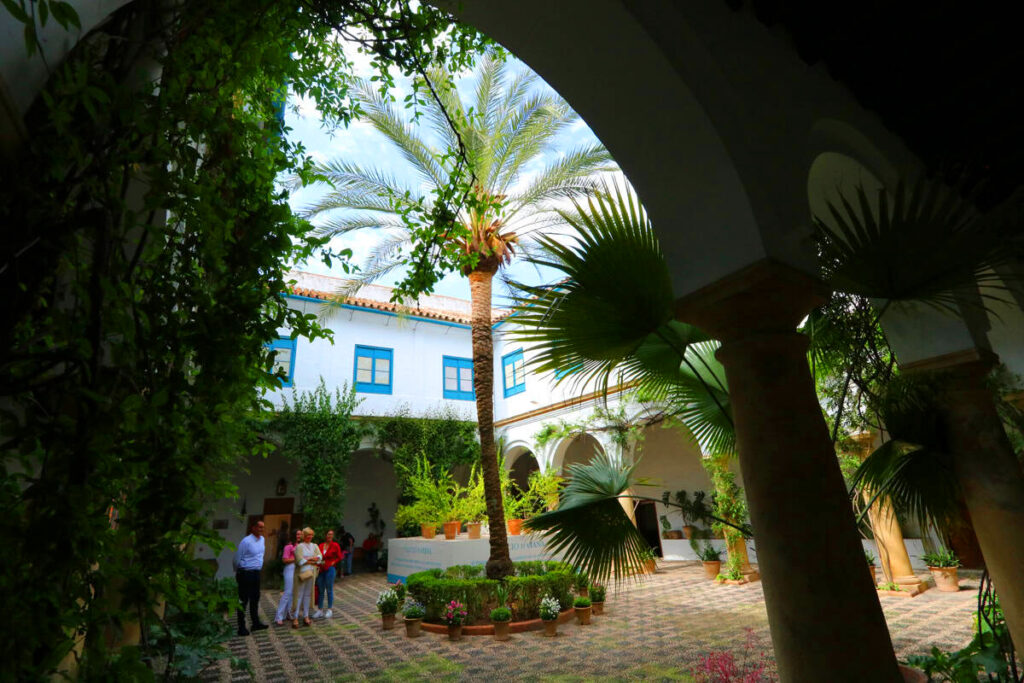
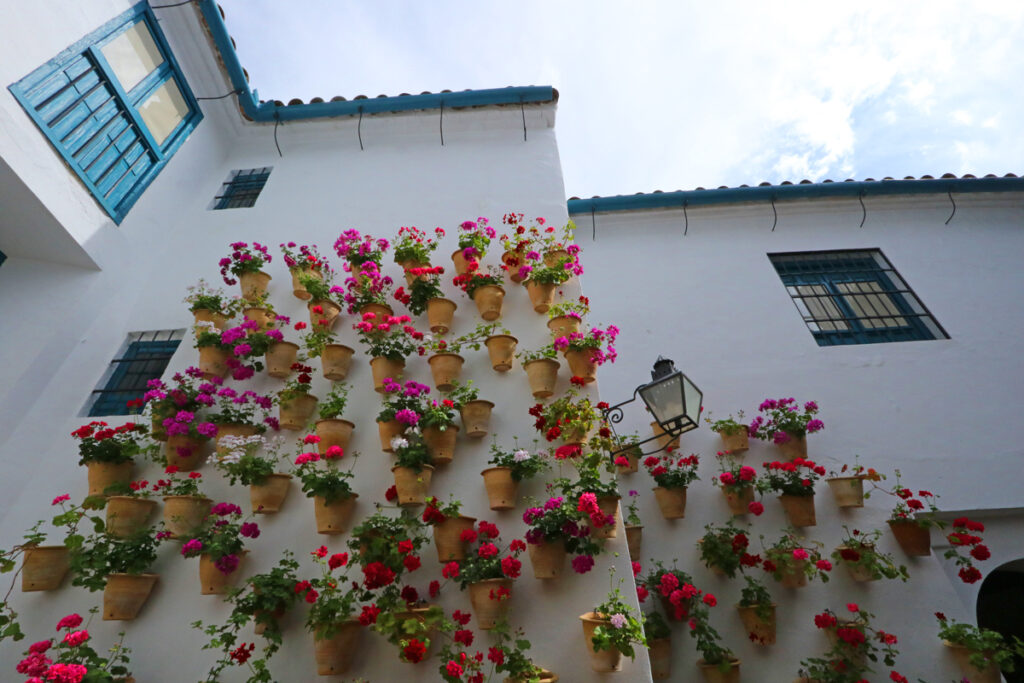

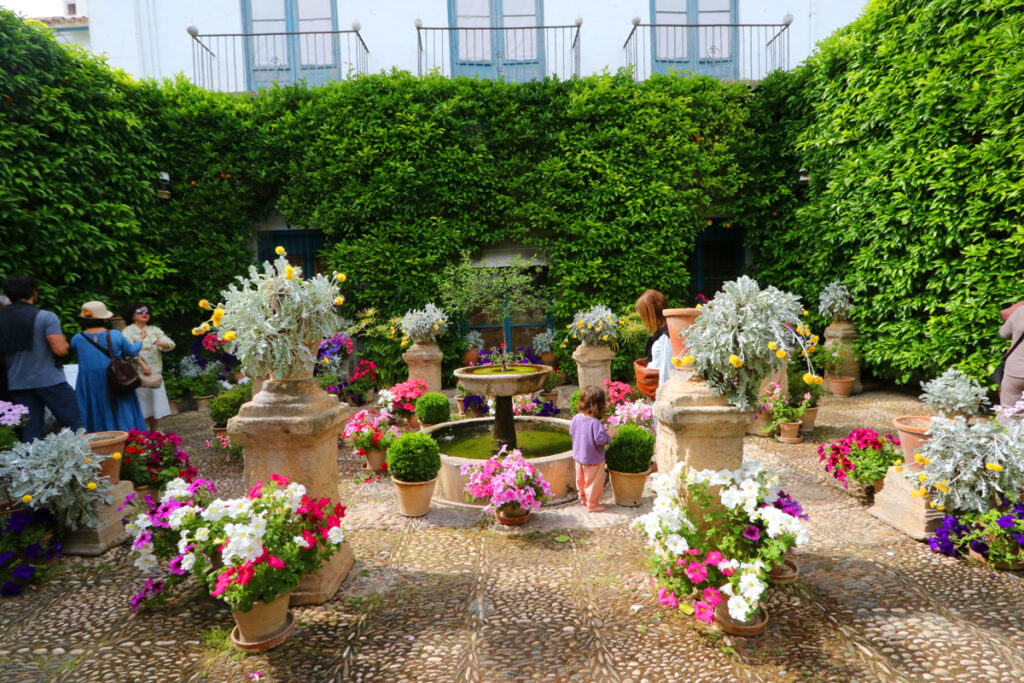
Note: although not far, getting to Palacio de Viana can be a bit confusing. If you have Google maps on your phone then great – otherwise you might want to take a taxi from the center.
Note: Free entry on Wednesdays from 2 pm to 5 pm.
Practical Information
– Getting there. Córdoba is a very easy day trip from Seville (Sevilla). High speed trains take you there in about 40 minutes. From Granada, you can get to Córdoba in 90 minutes by bus or 2 hours by train. From Madrid, a high-speed train takes 2 hours to get to Córdoba.
– When you arrive, there is a tourist office in the train station where you can pick up a free map.
– The best way to the Mezquita (which is right in the Juderia) is to walk straight out of the train station and make a right at the first street. You’ll be walking through a very pretty park – follow that about 20 minutes and you’ll get to the center (walk left through Puerta de Almodóvar, one of the old city gates).
– Tours. If you want to make your life a bit easier, the following tours are worth taking in Cordoba.
Summary
There’s more to Cordoba, including great day trips to Medina Azahara and Almodóvar Castle. And it is worth organizing your day trip around the Festival of the Patios of Cordoba. But for the purposes of this post, the above is enough to fill up a full (and busy) day.
Related: Cordoba’s Incredible Mezquita (in photos)

Related: Seeing the highlights of Seville- and saving money!
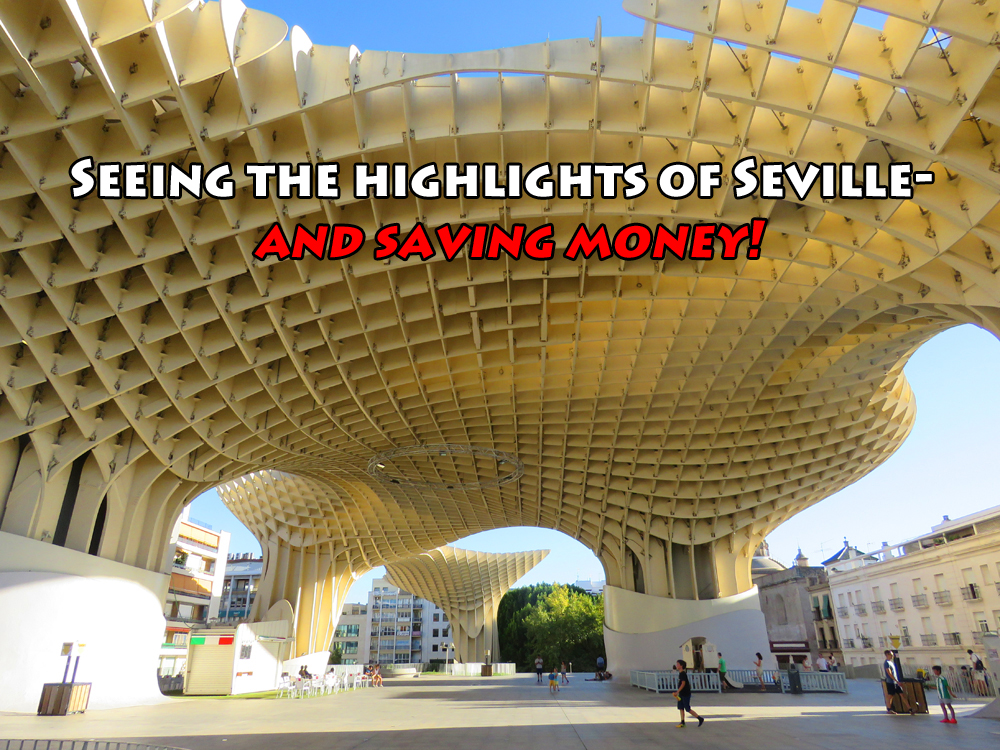
Related: The Best Moorish Sites in Spain
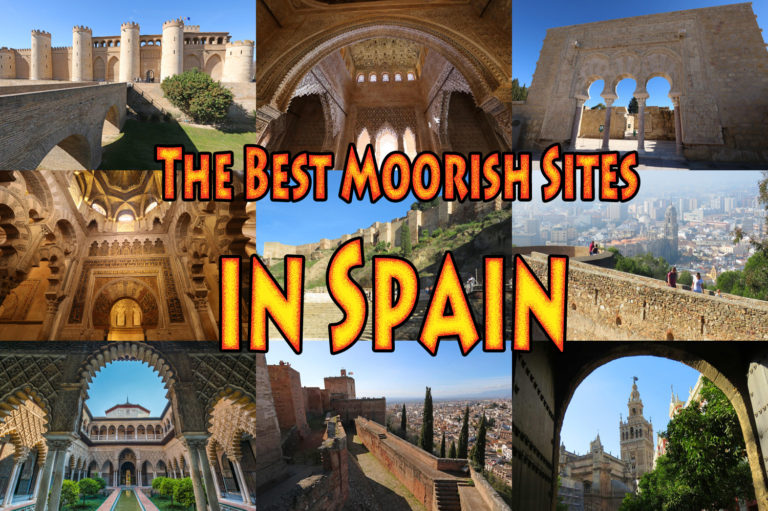

Thank you, an excellent blog on Córdoba! With al the ‘Must-see’ highlights! Córdoba is one of my all-time favorite cities, I try to go there at least once a year! We love the real, authentic Salmorejo from Córdoba. And the big Corredera square, but also the intimate Plaza del Potro. Looking forward to your next blogs!
Thank you so much Anne! I hope you are well. Never heard of Salmorejo – will try the next time in Cordoba. Look forward to being able to travel again 🙁